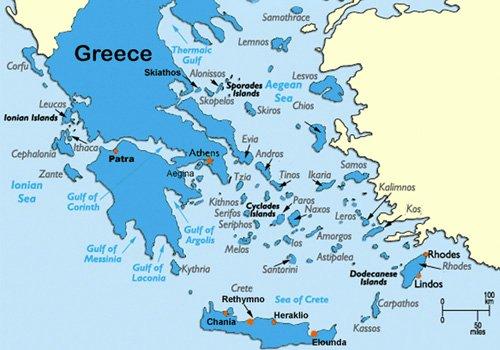Greece has somewhere between 1 200 and 6 000 islands depending on how you define the word island about 200 of them are inhabited

Greece: The Land of Countless Islands

When it comes to picturesque island destinations, Greece is undoubtedly a front-runner. This Mediterranean country, known for its pristine coastline and rich history, is home to an astounding number of islands. However, determining the exact count of Greek islands is an intricate task that leaves room for interpretation.
Greece has somewhere between 1,200 and 6,000 islands, depending on how you define the word “island.” About 200 of them are inhabited.

How Many Islands Does Greece Actually Have?
The commonly cited number of Greek islands is 1,200, which is still an impressive figure on its own. However, this count only includes islands inhabited by more than ten people. Such islands are connected to the mainland by scheduled ferry services, making them relatively easy to access. This definition excludes numerous smaller islands, islets, and rocky outcrops scattered throughout the Aegean and Ionian Seas.
To delve into Greece’s true island count, we must turn to the Hellenic Navy Hydrographic Service (HNHS). According to their records, there are about 6,000 islands and islets surrounding the Greek mainland. Although many of these landmasses are tiny and uninhabited, they contribute to the astounding richness of the Greek archipelago.
The Greek Island Experience
Every Greek island boasts a distinctive blend of natural beauty, quaint villages, and fascinating historical sites. The islands are often divided into several groups, each with its own characteristics and allure.
The Cyclades, known for their iconic white-washed buildings and blue-domed churches, are among the most famous island clusters in Greece. Santorini, Mykonos, and Paros are just a few of the Cycladic gems that lure millions of visitors each year. These islands offer a unique fusion of stunning beaches, picturesque landscapes, and vibrant cosmopolitan vibes.
The Ionian Islands, located on the western coast of Greece, are renowned for their lush greenery and azure waters. Corfu, Kefalonia, and Zakynthos are some of the notable destinations within this archipelago. With their serene atmosphere and charming Venetian architecture, these islands are a magnet for nature enthusiasts and culture seekers.
For those seeking an off-the-beaten-path experience, the Dodecanese Islands offer a remarkable blend of diverse landscapes and historical treasures. Rhodes, Kos, and Patmos are a part of this group, where medieval castles coexist with traditional island life. With crystal-clear waters perfect for diving and snorkeling, these islands offer a captivating escape from the hustle and bustle of everyday life.
Exploring the Greek Archipelago
Visiting even a fraction of Greece’s islands is an endeavor that can take a lifetime. Each island has its own charm, attracting travelers with golden beaches, vibrant local culture, and delectable Mediterranean cuisine. Whether you prefer discovering ancient ruins, basking in the sun on pristine shores, or indulging in local delicacies, the Greek islands have something to offer every traveler.
To fully appreciate the beauty and diversity of the Greek archipelago, island hopping is an ideal way to explore multiple destinations. Ferry services connect many islands, allowing visitors to easily move from one island paradise to another. Planning a tailored island-hopping itinerary offers an opportunity to witness a kaleidoscope of landscapes, traditions, and gastronomic delights.
So, whether you decide to island-hop through the Cyclades, dive into the crystal-clear waters of the Ionian Islands, or traverse the historical paths of the Dodecanese, the Greek islands will undoubtedly deliver an unforgettable experience.
This article is based on information from definitelygreece.com.
Tags
Share
Related Posts
Quick Links
Legal Stuff

